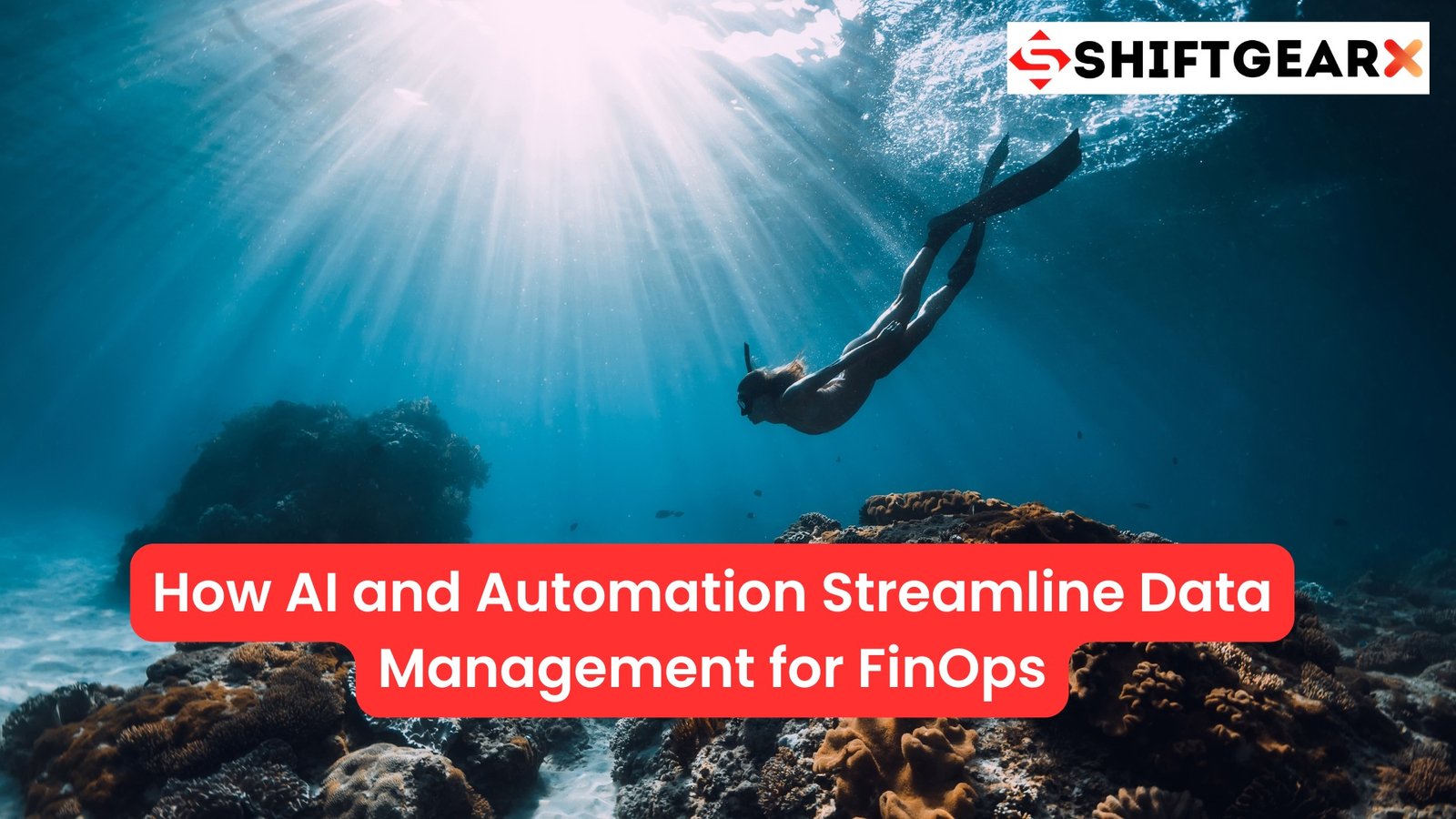Image Processing – Decoding the Unseen Magic & Computational Photography
Technology has enabled us to capture diverse dimensions of the universe, and the inventors driving this technology have their unique narratives to share. Jonathan Ragan-Kelley, an MIT Associate Professor, contributes significantly to technology by innovating programming and enhancing computation efficiency.
Ragan-Kelley’s contributions span from film industry special effects tools to widely-used programming languages like Halide, crucial for image editing.
His career sits at the intersection of domain-specific programming languages, machine learning, 2D and 3D graphics, computational photography, and visual effects. Ragan-Kelley’s broad expertise has made him a true innovator, committed to pushing boundaries in the technological space with unwavering determination.
| Concept/Contribution | Description |
|---|---|
| Halide | A specialized programming language for image processing that enhances speed and efficiency |
| Exocompilation | A compiler framework allowing for significant customization and human-directed programming |
| Specialized Hardware | Leveraging IBM Research’s machine learning accelerators to optimize tasks like computer vision and text creation |
The Evolution of Computational Photography
Ragan-Kelley has been at the forefront of computational photography, a field that merges computer science with traditional photography to create enhanced images. His work focuses on optimizing algorithms that allow cameras and imaging devices to capture and process images in new ways, such as improving low-light performance and creating dynamic range images. This technology has significant applications, from improving consumer-grade cameras to advancing scientific imaging techniques.
| Topic | Description |
|---|---|
| Low-Light Optimization | Enhancing camera algorithms to improve image quality in low-light conditions. |
| Dynamic Range Imaging | Techniques to create images with broader dynamic ranges, combining multiple exposures. |
| Scientific Imaging | Applying computational photography advancements to enhance imaging in scientific research. |
The Role of AI in Image Processing
Ragan-Kelley has integrated artificial intelligence (AI) into image processing, allowing for more sophisticated image recognition and manipulation. AI-driven algorithms can now identify objects, enhance image quality, and even generate realistic images from scratch. This integration is crucial in fields like autonomous vehicles, medical imaging, and surveillance, where precision and accuracy are vital.
| Topic | Description |
|---|---|
| Object Recognition | Using AI to accurately identify objects within images. |
| Image Quality Enhancement | AI algorithms to improve resolution, remove noise, and adjust colors. |
| Synthetic Image Generation | Creating realistic images using AI, beneficial in design and entertainment industries. |
Image Processing – The Rise of Special Effects Tools
When it comes to the film industry, Ragan-Kelley has made remarkable contributions, particularly in the area of special effects tools. These tools have revolutionized the industry and allowed filmmakers to bring their vision to life in a more realistic and seamless way. The technology that Ragan-Kelley has helped develop has also impacted other fields, such as medical imaging and scientific research.
JJonathan Ragan-Kelley, renowned for his work in the film industry, is also celebrated for creating Halide, a specialized programming language for image processing. This programming language is widely used and has been instrumental in making image processing faster and more efficient. Ragan-Kelley’s work on Halide has earned him recognition and awards in the tech industry.
Overall, Ragan-Kelley’s career is a perfect example of what innovation and commitment can achieve in the technological space. Jonathan Ragan-Kelley’s contributions to the film industry and programming languages have revolutionized various fields, enhancing efficiency worldwide. We can only imagine what he will come up with next.
| Area | Description |
|---|---|
| Film Industry | Development of special effects tools that revolutionize film production and realism |
| Medical Imaging | Application of image processing technology to improve medical diagnostics and research |
| Scientific Research | Enhancing the capability of scientific imaging through advanced computational tools |
| Halide | A language developed for faster and more efficient image processing |
Image Processing – To Harmonize Progress and Performance
In the last two decades, there has been a remarkable shift in chip design and programming. This transformation has led to various challenges and opportunities in the field. Unlike in the past, where general-purpose processing was dominant, we are currently witnessing the emergence of specialized procedures. This trend has brought about a new wave of technological advancement.
One of the major challenges facing us today is the need to balance the demand for specialized programming with the slower performance of general-purpose code. While units like GPUs and accelerators have overtaken CPUs in popularity, the speed of general-purpose code remains comparatively slow. This presents a significant trade-off that must be addressed if we are to unlock the full potential of newer and more efficient hardware.
Resolution of this challenge could revolutionize applications like high-bandwidth cellular radio, video/image processing, and decoding highly compressed videos for streaming. With the right approach, it could help improve the performance and speed of these applications, leading to a better user experience.
| Challenge | Description |
|---|---|
| Specialized Procedures | Emergence of specialized programming to optimize hardware performance |
| Performance Trade-Offs | Balancing the demand for specialized programming with the slower performance of general-purpose code |
| Technological Advancement | Improving applications like high-bandwidth cellular radio and video/image processing |
| User Experience | Enhancing user experience by addressing performance and speed challenges |
The Transition to Specialized Procedures
The transition from general-purpose processing to specialized procedures has brought about many opportunities in the field of technology. These opportunities are available to everyone who is willing to learn and develop the necessary skills. The shift has also given rise to new career paths for young people who are interested in technology.
However, it is essential to understand that mastering the necessary skills for specialized programming requires a significant amount of dedication and effort. Young people who are interested in this field should be willing to invest the necessary time and resources into their training. This investment will help them gain the necessary knowledge and experience to excel in this field.
What About Passive Learning
Passive learning isn’t optimal for specialized programming; active engagement and practice are key for developing proficiency in this field. Serious students should actively seek opportunities to practice and apply their acquired skills to develop proficiency in the field. This can be achieved through internships, mentorships, and online courses.
In conclusion, the shift from general-purpose processing to specialized procedures has opened up many opportunities in the field of technology. To succeed in this field, young people must be willing to invest the necessary time and resources into developing their skills. Passive learning isn’t effective for specialized programming. To excel, students need to actively practice and apply what they’ve learned.
| Aspect | Description |
|---|---|
| Specialized Programming | Shift from general-purpose processing to specialized programming |
| Skill Development | Importance of dedication and practice in mastering specialized programming |
| Career Opportunities | New career paths in technology for those willing to learn and develop skills |
| Active Learning | Emphasis on internships, mentorships, and online courses for skill development |
Ragan-Kelley: Bridging the Gap in Image Processing

When faced with challenges, Ragan-Kelley doesn’t back down. He uses two main techniques to overcome obstacles. First, he makes some sacrifices in order to increase efficiency. This involves tailoring his approach to specific computational problems rather than trying to find a solution that works for everything.
His work on the image-processing language Halide is a prime example of this approach. This tech revolutionized image editing and facilitates fast processing of dense numerical arrays, crucial for optimizing neural network computations.
Ragan-Kelley’s second strategy involves leveraging automation to create better matches between hardware and software. One of the projects his group at the MIT-IBM Watson AI Lab has worked on is called Exo. This project demonstrates the effectiveness of this approach.
| Technique | Description |
|---|---|
| Sacrificing Generality | Tailoring approaches to specific computational problems for increased efficiency |
| Automation | Creating better matches between hardware and software through automation |
| Halide | Revolutionizing image editing with fast processing of dense numerical arrays |
| Exo | Improving efficiency and performance through automated hardware-software matching |
What is Exo in Image Processing?
By automating the matching of hardware and software, Exo is able to significantly improve efficiency and performance.
Both of these techniques are critical to Ragan-Kelley’s success. Sacrificing generality may appear as a downside, but it allows him to concentrate on specific challenges and craft more effective solutions. Meanwhile, automation helps him to stay ahead of the curve by creating better matches between hardware and software.
Ragan-Kelley’s work is complex, but the benefits are clear. By creating tools like Halide and Exo, he is helping to shape the future of computing and artificial intelligence. His approach may not always be conventional, but it’s definitely effective. And as long as he keeps rising to the occasion, he’ll continue to make incredible contributions to the field.
Middle-Ground: Unleashing the Potential of Low-Level and High-Level Programming
For years, programmers have struggled to find the right balance between performance and flexibility. But now, thanks to the work of Ragan-Kelly, a solution may be in sight. Ragan-Kelley developed user-schedulable languages, prioritizing control, safety, and productivity, thus pioneering a novel approach to programming. These languages combine low-level coding with high-level programming interfaces, giving engineers more control over program operations on hardware.
Traditionally, low-level coding has been seen as the most efficient way to write programs that run quickly and use minimal resources. However, it requires a deep understanding of hardware and is prone to errors that can cause serious problems. High-level programming interfaces, on the other hand, offer more flexibility and are easier to use, but they sacrifice performance and can be less secure.
User-schedulable languages aim to bridge this gap by allowing programmers to write code that is both efficient and easy to use. They provide a high level of control over hardware operations, which can be customized to suit the specific needs of the program. At the same time, they offer a level of safety that is not available in traditional low-level coding.
| Approach | Description |
|---|---|
| User-Schedulable Languages | Combining control, safety, and productivity in programming languages |
| Low-Level Coding | Efficient and resource-minimal coding that requires deep hardware understanding |
| High-Level Interfaces | Flexible and easier-to-use interfaces that sacrifice performance |
| Balancing Efficiency | Bridging the gap to provide both performance and ease of use in programming |
Pioneering Domain-Specific Languages
Ragan-Kelley’s work on domain-specific languages (DSLs) like Halide has revolutionized how programmers approach complex computational problems. These languages are tailored for specific tasks, offering optimized performance and ease of use. Halide, for example, simplifies the process of writing high-performance image processing code, making it accessible to a broader range of developers.
| Topic | Description |
|---|---|
| Halide | A DSL for image processing, providing high-performance and simplified coding. |
| Performance Optimization | Enhancing computational tasks through DSLs tailored for specific domains. |
| Accessibility for Developers | Lowering the entry barrier for complex programming tasks with user-friendly languages. |
How Ready Are We Today?
These languages are still in development, but they hold great promise for the future of programming. Mixing low-level and high-level programming can enhance software development, boosting efficiency and reliability for programmers while reducing required effort. Developers might find it simpler to engage with diverse hardware platforms, lessening the necessity for specialized expertise and skills.
Of course, there are still challenges to overcome. For example, user-schedulable languages will need to be carefully designed to ensure that they are both secure and easy to use. They will also need to be integrated into existing programming frameworks, which could require significant changes to existing code.
Despite these challenges, the potential benefits of user-schedulable languages are clear. They could transform the way we think about programming, allowing us to create software that is both powerful and user-friendly. Ragan-Kelley and his team’s ongoing development of these languages promises a future where programming becomes increasingly accessible and efficient.
Harnessing High-level and Underserved Techniques in Image Processing
When it comes to addressing obstacles, Ragan-Kelley takes a two-pronged approach. Firstly, by utilizing modern artificial intelligence methods and machine learning, they can create more efficiently optimized programs. Secondly, by implementing a technique called “exocompilation,” which consists of a compiler’s framework, allowing for significant personalization and human-directed programming. This strategy seeks to utilize specialized hardware, such as IBM Research’s machine learning accelerators, to improve tasks like computer vision and text creation.
Ragan-Kelley’s first technique focuses on the utilization of AI techniques and machine learning. By using these cutting-edge technologies, they are able to design better-optimized programs that can operate more efficiently and effectively. This approach not only results in improved performance but also helps to streamline processes and minimize wasted resources.
The second strategy, exocompilation, centers on a compiler’s skeleton. This enables a significant degree of customization and allows for human-guided programming. Ragan-Kelley strategically utilizes specialized hardware, like IBM Research’s machine learning accelerators, to optimize tasks such as computer vision and text generation.
| Technique | Description |
|---|---|
| AI and Machine Learning | Utilizing modern AI methods to design optimized programs |
| Exocompilation | Framework for significant customization and human-directed programming |
| Specialized Hardware | Using hardware like IBM’s ML accelerators to enhance tasks like computer vision and text generation |
| Computational Efficiency | Aiming for faster, more reliable systems by optimizing every aspect of the computing process |
Pushing the Boundaries
Ragan-Kelley’s overall goal is to push the boundaries of technology, optimizing every aspect of the computing process. Through these methods, they hope to create systems that are faster, more efficient, and more reliable than ever before. This means using every available tool at their disposal, including advanced AI techniques, specialized hardware, and human-directed programming.
In conclusion, Ragan-Kelley is working tirelessly to improve the capabilities of modern technology. They aim to create programs that operate with maximum efficiency and speed by utilizing AI techniques, machine learning, and exocompilation. With a focus on specialized hardware and human-guided programming, they aim to push the limits of what’s possible, striving for highly optimized systems.
Striking the Chords: Balance between Conventional and Breakthrough Approaches
Ragan-Kelley’s approach to research sets him apart from others in the field, as he doesn’t limit himself to widely accepted theories. Instead, he strives to identify and address areas that have been overlooked but have the potential for significant impact. In the course he teaches at MIT, 6.106 (Software Performance Engineering), Ragan-Kelley delves into emerging topics from fresh perspectives.
By embracing this unconventional approach, Ragan-Kelley is able to uncover new insights that others may have missed. He believes that studying emerging topics from unique angles can help shed light on issues that have been previously unexplored. Through his research, he endeavors to discover innovative and effective solutions, avoiding mere repetition of existing methods.
At MIT, Ragan-Kelley teaches Software Performance Engineering, urging students to approach the subject with open-mindedness and curiosity. He believes that exploring emerging topics from new angles can help students develop a deeper understanding of the subject matter. This approach can empower students to identify unexplored areas within the field, enabling them to make meaningful contributions to its advancement.
| Approach | Description |
|---|---|
| Unconventional Research | Exploring neglected areas with high impact potential |
| MIT Course 6.106 | Teaching Software Performance Engineering with a focus on parallelism and memory optimization |
| Fresh Perspectives | Encouraging the study of emerging topics from new angles for deeper understanding |
| Creative Solutions | Developing innovative solutions by avoiding repetition of existing methods |
Serving Underserved Areas
In addition to his teaching, Ragan-Kelley’s research is focused on identifying and addressing underserved areas with high impact potential. He is driven by the belief that there are solutions to many of the world’s problems that have not yet been discovered. By taking an unconventional approach to research, he hopes to uncover these solutions and help make the world a better place.
While Ragan-Kelley’s approach may seem unorthodox to some, he has found great success in his research and teaching. He has been recognized for his contributions to the field, and his work has helped to inspire a new generation of researchers and innovators. Through his work, he has demonstrated the value of exploring emerging topics from fresh perspectives and has shown that there is much to be gained by taking a creative approach to research.
In conclusion, Ragan-Kelley’s research paradigm sets him apart from others in his field. Ragan-Kelley’s unique focus on neglected yet impactful areas and novel perspectives has led to significant advancements in software performance engineering. Ragan-Kelley’s unconventional methods have inspired creativity and exploration, showcasing the potent impact of innovation and imagination in research endeavors.
| Focus Area | Description |
|---|---|
| High Impact Potential | Identifying and addressing underserved areas with significant potential |
| Unconventional Methods | Using creative and unconventional methods for impactful research |
| Inspiring New Generations | Inspiring a new generation of researchers and innovators through unique research paradigms |
| Contributions | Making significant advancements in software performance engineering through innovative approaches |
Leveraging Machine Learning for Hardware Acceleration
Ragan-Kelley has been instrumental in applying machine learning techniques to optimize hardware performance. By focusing on how software interacts with hardware, he has developed methods to accelerate computations, making them more efficient. This work is particularly relevant in areas like deep learning, where processing large datasets quickly is essential.
| Topic | Description |
|---|---|
| Hardware Optimization | Techniques to improve how software and hardware interact for faster computations. |
| Deep Learning Acceleration | Applying machine learning to enhance the processing speed of large datasets. |
| Efficient Computation | Reducing computational load through optimized hardware-software integration. |
Exploring the Future of Programming Languages
The development of user-schedulable languages represents a potential future for programming, where flexibility and control are balanced with performance. These languages allow developers to fine-tune how their code runs on different hardware platforms, providing a level of customization that was previously difficult to achieve. This approach could lead to more efficient and powerful software applications.
| Topic | Description |
|---|---|
| User-Schedulable Languages | Programming languages that offer both flexibility and control over hardware operations. |
| Customization in Programming | Allowing developers to tailor code execution to specific hardware needs. |
| Future Prospects | The potential for these languages to revolutionize software development and hardware utilization. |
Impact on Real-World Applications
Ragan-Kelley’s contributions have far-reaching implications beyond academia. His innovations in image processing and computational photography are already being used in industries such as entertainment, healthcare, and scientific research. These advancements are enabling more precise medical diagnoses, enhancing the quality of special effects in films, and allowing scientists to capture more detailed images of the natural world.
| Industry | Application |
|---|---|
| Entertainment | Improved special effects and realistic image generation for films and video games. |
| Healthcare | Enhanced medical imaging techniques for better diagnosis and treatment planning. |
| Scientific Research | Advanced imaging methods for capturing detailed scientific data. |
My Personal Views
As an observer of the world of technology, I find the work of Professor Jonathan Ragan-Kelley incredibly inspiring. His exceptional blend of conventional techniques, upgraded modern strategies, and unexplored concepts creates a fresh perspective towards computation’s efficiency and hardware. By identifying key issues faced by human performance engineers and developing languages that provide them more control, he is set to shape the future of programming.
Ragan-Kelley’s remarkable contribution to the application of AI and machine learning techniques continues to push the boundaries of compiler performance. This intersection of hardware and software and how it shakes the computational world presents an exciting advancement to look forward to. Given the rapid advancements in technology, the role of specialized hardware in optimizing everything from computer vision to text generation offers an intriguing prospect.
| Aspect | Description |
|---|---|
| Technological Prospects | Exciting advancements in computation efficiency, programming languages, and hardware integration |
| Innovative Outlook | Ragan-Kelley’s innovative approach to solving computational challenges |
| Future Contributions | Anticipation of further advancements and contributions from Ragan-Kelley in the tech industry |
Frequently Asked Questions
Q1: Who is Jonathan Ragan-Kelley?
A1: Jonathan Ragan-Kelley is an Associate Professor from the MIT Department of Electrical Engineering and Computer Science, engrossed in developing innovative solutions for efficient programming and computation efficiency.
Q2: What is Halide?
A2: Halide is an image-processing language co-developed by Jonathan Ragan-Kelley. It has transformed the image editing industry and optimized functions in neural network computations due to its efficiency in handling dense arrays of numbers.
Q3: What’s the link between AI and hardware performance?
A3: Ragan-Kelley leverages AI and machine learning techniques to optimize compiler performance and develop programs that adapt efficiently to hardware, thus unlocking the potential of specialized hardware systems for diverse applications.
Q4: How does Ragan-Kelley approach software performance?
A4: Ragan-Kelley approaches software performance by employing lower, safer and higher-level programming interfaces, such as user-schedulable languages. This approach enhances control over how programs run on the hardware, reconciling efficiency with flexibility.
Q5: What does ‘exocompilation’ mean?
A5: Exocompilation is a method whereby a compiler’s skeleton is used to allow extensive customization and human-guided programming.
Some More Q&As…
Q6: How does Ragan-Kelley differentiate his work?
A6: Ragan-Kelley’s work stands out due its focus on underserved areas with high impact potential. His aim is to find ideas that possess high practical leverage and are currently compatively ignored by the research community.
Q7: What is the MIT course 6.106 (Software Performance Engineering)?
A7: Ragan-Kelley’s course at MIT, 6.106 (Software Performance Engineering), delves into parallelism, memory optimization, and leveraging specialized hardware for peak performance.
Q8: What is the relevance of Ragan-Kelley’s work for the future?
A8: Ragan-Kelley’s unique approach to programming, especially his emphasis on the development of user-schedulable languages, could change the way we program. It could potentially unlock new applications and ideas by exploiting complex hardware.
Q9: Which technology can leverage Ragan-Kelley’s research?
A9: His research spans a wide range of applications, including computer vision, object recognition, speech synthesis, image synthesis, and language model generation, among others.
Q10: What is Ragan-Kelley’s key contribution to the tech industry?
A10: Ragan-Kelley’s tech contributions span programming language development, enhancing hardware-software integration, and exploring AI accelerators from IBM Research, bolstering specialized hardware systems.
Final Thoughts
Ragan-Kelley’s endeavors depict the thrilling prospects in the realm of computation efficiency, programming languages, and hardware. His innovative outlook certainly sets him apart as he seeks to unlock the computational potential of the ever more complex hardware systems of today. We genuinely look forward to what more he has in store!
Don’t forget to subscribe to Shift Gear X for more articles. Need expert advice or consulting? Be sure to visit Shift Gear.
Check this also – Synthesis Essay Writing: The Impact of AI on Academic Research – Shift Gear X – Build Your Future Net Worth Now













